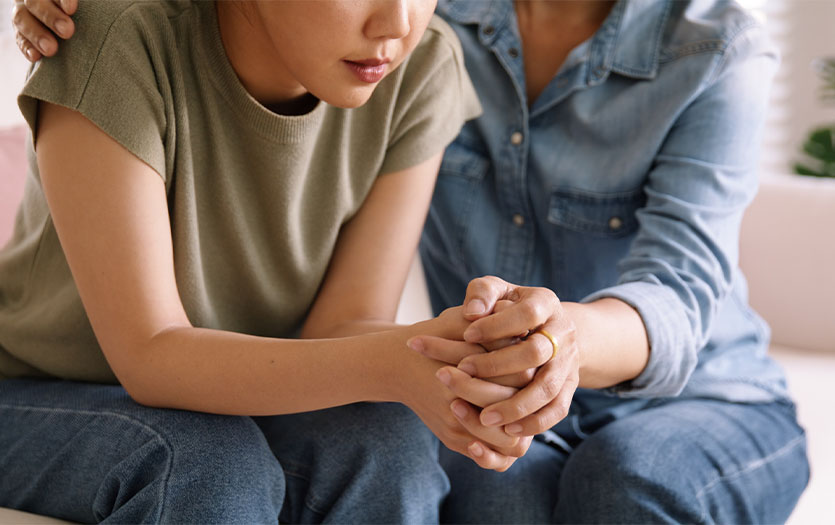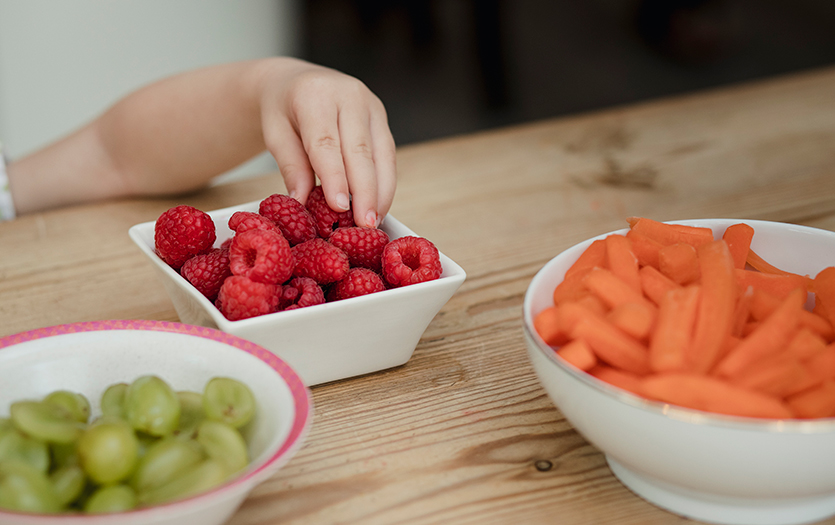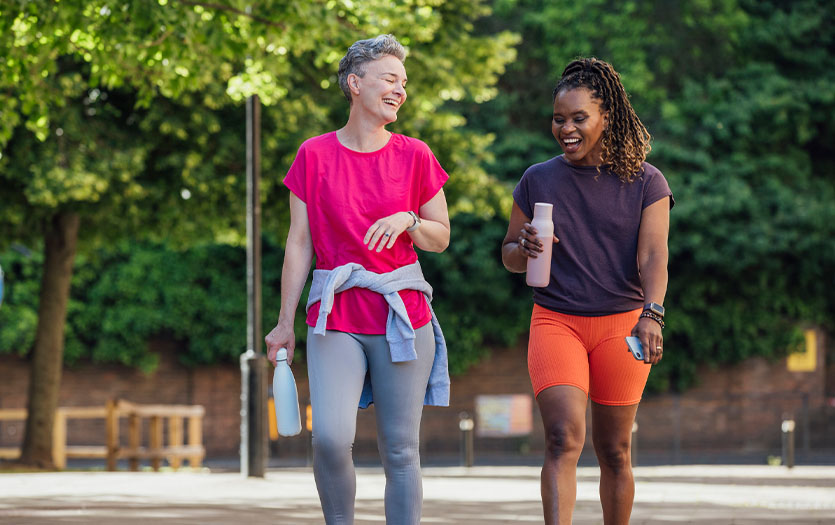
This post was written by Kristen Varian, PsyD, PPG – Psychiatry and Psychology, Parkview Behavioral Health Institute.
Earlier this year, I got the special opportunity to speak at a United Way event regarding current mental health challenges in society and within our community, with a special emphasis on the needs of our youth. The event was held at the local Air National Guard base, and I got to speak in a hangar with F-16 fighter jets. Preparing for the speech got me thinking about power in each of us and the importance of perspective taking.
Several years ago, when I was in graduate school, one of the American Psychological Association graduate student organization’s slogans was “The power in you makes a difference.” Standing among the powerful F-16 jets was a reminder that each and every one of us has the power to make some kind of difference in the mental health of the Fort Wayne community. While your power and my power may look different, it is power all the same.
Since moving to Fort Wayne, I regularly hear the Air National Guard jets flying over. The sound of them is impossible to miss. This leads me to look up into the sky to see if I can get a peek. Sometimes I wonder who is up there, what they’re experiencing, and what they can see from their vantage point. While all I can see in those moments is what is visible around me, they can see for miles. Their perspective is much different than my own, and in many ways our perspective, our perception, shapes our reality.
Adolescent milestones
While perspective taking is hard for many people, it’s something that our youth particularly struggle with, to no fault of their own. While many people are familiar with the developmental milestones of early childhood, things like walking, talking and toilet training, most are less familiar with psychosocial developmental milestones of adolescents.
These milestones, held under the umbrella of adolescent egocentrism, lead adolescents to become more concerned with their personal experience while also having a hard time considering that unwanted consequences can happen to them. They often believe that bad things only happen to other people. For many years we thought of this as an inherently problematic part of development and that adolescents were full of risk potential as a result. However, new research is showing that adolescent brain changes have foundations in increased cognitive flexibility and allow adolescents to be more creative in trying on different aspects of experience in order to eventually settle into themselves as they transition into adulthood.
Perspective taking complications
Within the challenges of perspective taking, especially for adolescents with mental health challenges, seeing the bigger picture beyond their current experience is often especially difficult. Part of this is the human condition of having unlimited access to our own internal experience. We have unlimited access to our own struggles, our own unhelpful internal self-talk, our faults and our mistakes. Even so, we have very limited access to the internal experience of others. With this, it’s easy to start to think that we’re broken, our pain is intolerable, or that there’s something inherently wrong with us. Especially for our youth, this can become all-encompassing and overwhelming. Pair this with neuroscience research that has shown that younger people process what are often referred to as “negative emotions” more slowly, and there are several hurdles to making progress around youth mental health.
Social media and technology have made this process even more complex. In a world where competition and comparison are readily available at almost every moment of our lives, it is deeply important that our youth learn about care and empathy, and develop social and emotional health in order to promote giving and receiving compassion within themselves and with others.
Perspective taking and social media
Increased access to technology not only provides an environment of invalidating comparison, but also presents additional challenges to addressing and ending bullying. Bullying is now not only happening in person or through typical platforms of text and social media, but is even done in more covert ways such as using shared Google documents, which are intended for schoolwork. Even things used for educational enrichment are posing threats to the mental health and well-being of our young people. With this, it’s important for youth to learn this process of perspective taking in their life, to learn that they’re not alone, and to increase compassion for themselves and others in order to develop resilience, along with things like critical thinking skills, accountability and self-discipline.
With this, technology and social media are not all bad. We know they can be a means to connection and support, with many teens reporting that social media helps them to feel more accepted, allows for increased contact with friends, helps them to express themselves creatively, and creates opportunities for connection with people with shared interests. However, balance and considering prior mental health status seems to be part of the key here, as teens who spend three or more hours on social media have about twice the risk of unwanted mental health outcomes, including depression and anxiety. Additionally, teen girls who already have mental health concerns are particularly at risk of the harms of social media use, including increased risk for anxiety, depression, suicidal thoughts and acts, as well as eating disorders.
Very recent research has shown that limiting social media use to 30 minutes per day in young adults is correlated with significantly lower levels of anxiety, depression, loneliness and fears of missing out. This is even true if the person sometimes goes over the 30-minute mark. Not just for youth and young adults, but for the general population, technology is changing the way our brains work. The average attention span in 2004 was 2.5 minutes, now it is about 47 seconds, and research shows that these quick shifts in attention are stressful to our brains and to our lives in general.
Hoosier teens
Overall, the youth of Indiana are really struggling. According to the most recently published data, gathered up until 2021, almost 47% of Indiana high school students have significant symptoms of a major depressive episode, 22% seriously considered suicide, and a little over 10% actually attempted suicide. That means that 1 in 5 Hoosier teens has seriously considered ending their life and 1 in 10 have actually attempted.
While all these issues were already happening, the challenges of the COVID-19 pandemic complicated mental health struggles for many individuals, especially our youth. Since the events of 2020, we have seen increasing challenges with youth and their ability to connect with others in a meaningful way. We’ve also seen increases in school anxiety and school avoidance, with many youth not returning to a traditional school environment as a result of mental health challenges.
Addressing youth mental health
When the picture of mental health here looks so bleak and grim, what can we do? There isn’t one simple solution. There are many complex systems that pose challenges to addressing mental health stigma and providing access to resources and care.
In creating solutions, team-based approaches to care are important, as well as early intervention. Peer support programs and groups are really growing in Indiana, including those that are free and don’t require previously obtaining a mental health diagnosis to participate. Things like access to case management services are vitally important for working on the everyday living challenges that present along with mental health issues. Additionally, it's helpful to encourage not just a medication-only approach to treatment, but rather, using medication as a facilitator to engage more readily in other forms of treatment so that the individual can learn the skills and tools to effectively manage their symptoms and increase their quality of life.
What parents can do
The impact of modeling to promote resiliency is so important. Please don’t ever underestimate your individual power to model healthy emotional expression, behaviors, interpersonal relationships and a sense of self to a child or adolescent. They learn so much from what the adults in their life do and don’t talk about, how they respond to challenging situations, how they express emotions, and so much more.
What a child sees and experiences becomes their norm, so providing them with a positive experience of these things can be vitally important. These sentiments are being upheld by research on adolescent brains. We used to think that the development of adolescent decision making was more aligned with peers, but recent research shows that adolescents’ behavior most closely aligns with risk behaviors of parents. This also applies to the processing of emotions, as adolescents’ brains reflect the way their parents’ brains process emotions. This is another reason it’s crucial for adults to reach out for help when needed.
A different perspective
Children and adolescents are wonderfully adaptive beings, and they learn how to survive in the context of their life experiences. Many children, out of necessity, become creative in getting their needs met. This is sometimes what we see with behavioral problems, what’s labeled as opposition and defiance, or generally problematic children. As children take these tools of survival with them throughout life, they can become unhelpful, sometimes even making the situation worse.
What’s important is helping that person learn how to get their needs met in different and more adaptive ways as they progress into adolescence and adulthood. To do this, we need collective support from communities, including individuals coming together for the greater good to enact change. We need to combine our individual power into collective power to change the landscape of mental health by supporting parents, families, children, young adults and individuals in their struggle. To let them know they are not alone, and care and support are available to them. With this, the power in each and every one of us can truly make a difference.
Let us help
For an initial screening, call the HelpLine at 260-471-9440 or 800-284-8439, anytime 24 hours a day. Experienced specialists are available to guide you to the appropriate level of care or resources.



